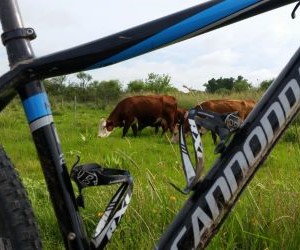Master endurance cycling in tropical climates with effective strategies. Learn hydration, heat adaptation, and training tips for peak performance.
HOW DO I TRAIN FOR EXPLOSIVE HILL CLIMBS?
Hill climbs separate the contenders from the pretenders. Explosiveness on steep gradients requires a unique mix of raw power, endurance, and tactical precision. This article explores science-backed training methods to master explosive hill climbs, from interval workouts and gym strength routines to cadence control and recovery strategies. Whether you’re a competitive cyclist or a weekend warrior, these insights will help you dominate climbs with controlled aggression and sustained speed.

Understanding explosive climbing
Explosive hill climbing is not just about strength—it’s about harnessing anaerobic capacity, neuromuscular coordination, and efficiency. Unlike steady climbs, explosive efforts demand short bursts of high power output, often deciding races or group rides. Training for this discipline means conditioning the body to recruit fast-twitch fibers while maintaining form and cadence under maximum stress.
The physiology of explosive efforts
During steep climbs, oxygen supply is limited and energy comes from anaerobic glycolysis. Lactate builds rapidly, and the ability to buffer this accumulation determines whether a rider sustains the effort or fades. Fast-twitch muscle fibers, essential for sprint-like power, are heavily recruited. Training enhances their activation and endurance.
High-intensity power comes from fast-twitch fiber recruitment.
Lactate threshold determines sustainable explosive effort.
Core stability and posture efficiency reduce wasted energy.
Why it matters in racing
Explosiveness often decides outcomes on short, punchy climbs or summit finishes. Riders who can surge decisively create gaps competitors cannot close. Even in non-race settings, explosive climbing builds overall strength and confidence for all terrains. It’s a skill that pays dividends across cycling disciplines.
Key training methods for explosive climbing
Explosive climbing ability can be trained systematically with targeted intervals, gym work, and on-bike drills. The goal is to simulate real climbing demands while progressively overloading the neuromuscular and cardiovascular systems.
Interval training sessions
Intervals replicate the surges needed in steep climbs. Sessions like 30-second all-out sprints up gradients with equal rest, or 3–5 minute VO₂ max hill repeats, condition both anaerobic and aerobic systems. Riders should mix seated power intervals with standing accelerations to mimic race dynamics.
Hill sprints: 8–10 reps of 20–30 seconds max effort.
VO₂ max repeats: 4–6 reps of 3–5 minutes at near-max effort.
Over-unders: alternating 1 minute above threshold, 1 minute just below.
Strength training for cyclists
Off-the-bike strength work builds the foundation for explosive climbing. Focus areas include lower-body power, core stability, and hip mobility. Exercises like squats, lunges, deadlifts, and plyometrics improve recruitment of large muscle groups under load.
Core training—planks, Russian twists, and rotational movements—ensures that power transfer from the legs to the pedals remains efficient during high-torque climbs.
Cadence and gearing practice
Explosive climbs require managing cadence under resistance. Training across different gear ratios teaches control and efficiency. Riders should practice attacking climbs both at high cadence (95–100 rpm) and low cadence (60–70 rpm) to build versatility.
Recovery and execution strategies
Explosive efforts tax the nervous system heavily, requiring careful recovery. At the same time, executing explosive climbs effectively involves tactical and psychological preparation, not just physical training.
Recovery protocols
Recovery is when adaptation occurs. Nutrition rich in protein and carbohydrates, hydration, and active recovery rides all accelerate repair. Sleep is non-negotiable—growth hormone release during deep sleep enhances muscle repair and power development.
Prioritize 7–9 hours of quality sleep per night.
Use foam rolling and stretching for mobility maintenance.
Plan recovery days after high-intensity hill sessions.
Race-day execution
In racing scenarios, timing matters as much as power. Launching too early risks burnout; too late, and the opportunity is gone. Riders must read terrain, rivals’ body language, and their own sensations to strike at the decisive moment. Training should include simulated attacks within group rides to sharpen tactical instincts.
Mental toughness and visualization
Explosive efforts hurt, and the brain often wants to quit before the body. Mental conditioning through visualization, breathing control, and focus drills enhances resilience. Imagining successful attacks on familiar climbs primes the body for execution under pressure.
Ultimately, mastering explosive hill climbs requires a complete system: targeted intervals, strength training, tactical awareness, and disciplined recovery. Cyclists who invest in all these aspects can turn steep gradients from dreaded obstacles into race-winning opportunities.
YOU MAY ALSO BE INTERESTED






